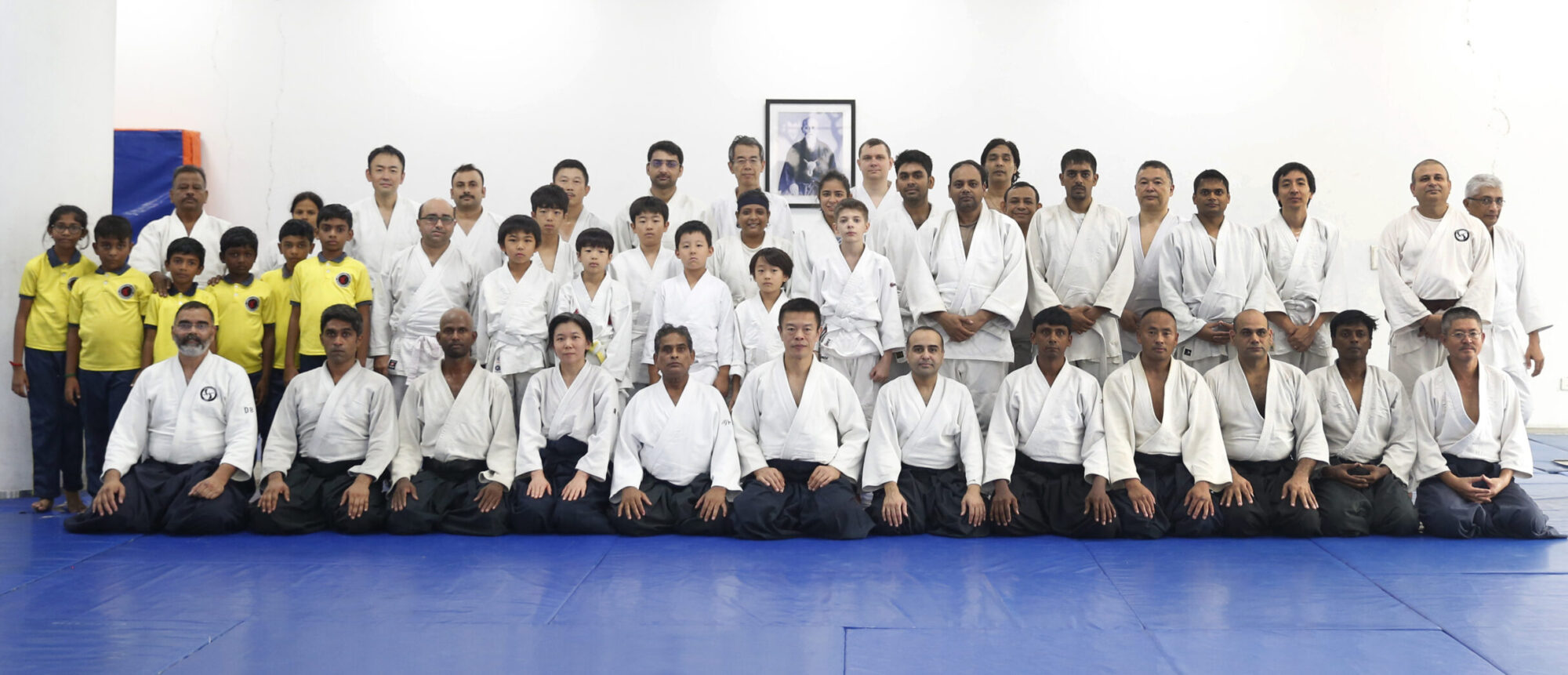(From Gaku Homma Sensei’s book Children and the Martial Arts)
 Nearly all new students – adults as well as children – begin taking Aikido classes with preconceptions about martial arts. They believe that with a little practice, they’ll be performing the same techniques they’ve seen their Hollywood heroes perform.
Nearly all new students – adults as well as children – begin taking Aikido classes with preconceptions about martial arts. They believe that with a little practice, they’ll be performing the same techniques they’ve seen their Hollywood heroes perform.
Children are constantly experiencing new things, but they don’t yet have enough experience to evaluate all the new information. They’re eager to try just about anything. (…)
What then are the natural actions of children? Why is it that a children’s fight is usually grabbing and wrestling rather than punching and kicking? Because most children begin receiving martial arts training as soon as they are born. Infants quickly learn that mother’s face must be grabbed gently. Punching-like movements are discouraged. Children learn that they must not “hurt” toy animals or dolls. As for kicking, children use their legs primarily for balance, which means that kicking is not a natural movement for them. When children become old enough to play with other children, their parents teach them to be nice. Most parents want their children to be accepted and liked by other children; they don’t want to raise social misfits. Even if a parent is a martial artist themselves they do not encourage young children to act aggressively, to hit or kick their playmates. In other words abrupt physical contact such as punching, kicking, and scratching is discouraged during early childhood. But, on the other hand, parents want their children to be active, running around the yard with friends, throwing balls, and wrestling with the neighbor kids. (Major complaints focus on dirty clothes!) When children frolic, like puppies, parents do not complain. I believe that these basic “techniques” that children learn at an early age – how to get along with each other – should continue to be developed in martial art training.
“Truce, not aggression. Harmony, not confrontation.” These are basic principles of Aikido. Children who study Aikido learn that harmony is preferable to confrontation, that peaceful solutions are preferable to non-peaceful solutions.
When I think of how much energy parents spend teaching their children how to be nice to their brothers, sisters, and other children, I find it strange that many parents decide to enroll their five- and six-year-olds in martial arts classes that teach them how to punch and kick other children. What kind of message are we sending to the children who win trophies at martial arts tournaments? That a winner is the person who can outpunch and outkick the opponent? That conflicts are best resolved by beating up your adversaries?
I mentioned earlier that there is no competition in Aikido; only classes. Children learn to perform techniques within a general set of rules. Every child who studies Aikido has a unique personality, and Aikido is not guaranteed to make every child happy. But it certainly nourishes a positive attitude, and it helps develop children who can live in harmony with other children. I don’t know if the same thing can be said of all martial art dojos. As an instructor of a martial art, I sometimes question why children should study martial arts which teach aggressive techniques and promote competition.
I believe that a certain gentleness of spirit is part of the ethical foundation of the United States. Because I am first a concerned citizen, second a martial arts instructor, I am concerned about the kind of people that kids will grow into.

